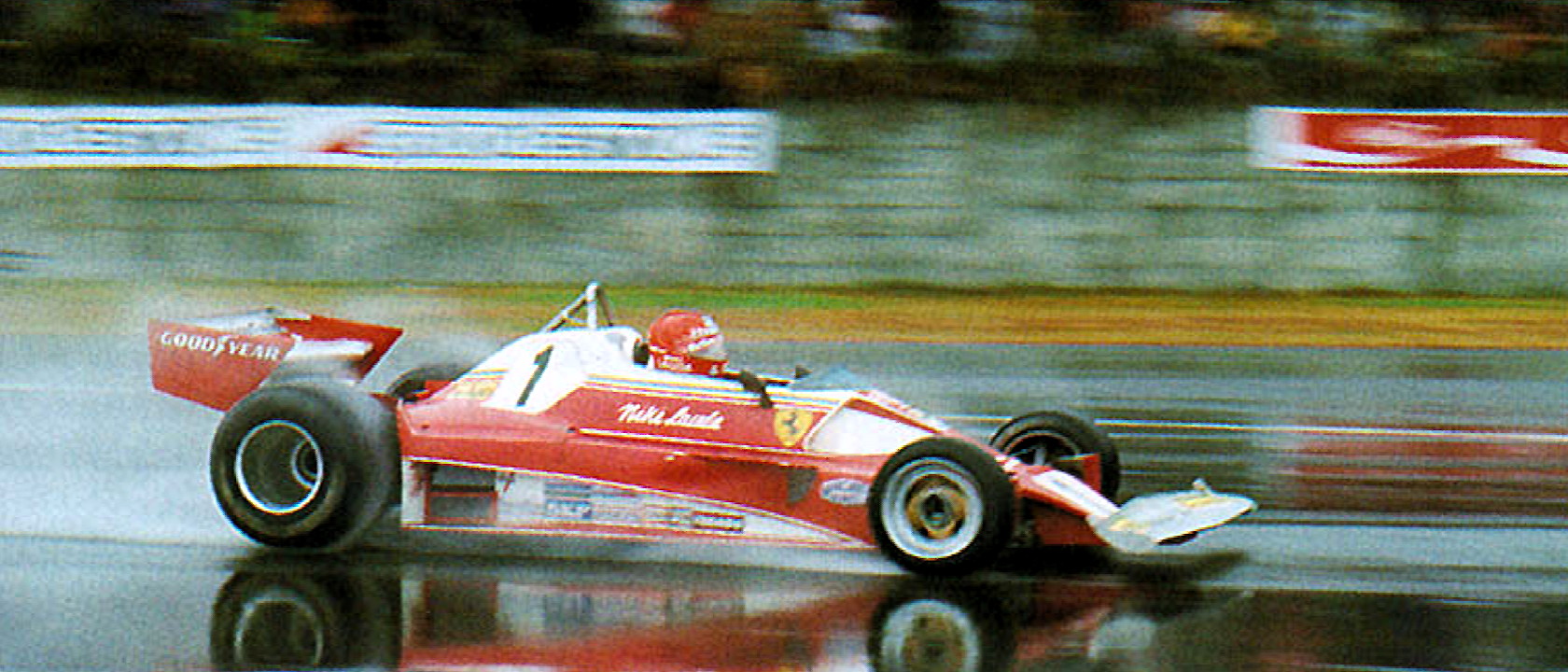


Ferrari 312T 1975
Niki Lauda had two careers in Formula One. The first, from 1971 through 1979, included two World Championships for Ferrari, a horrifying accident at the Nürburgring — in which he nearly died and was administered the Last Rites of the Catholic Church — and the famous rain-soaked finale in 1976 at Japan’s Mt. Fuji where, just weeks after his disfiguring crash, Lauda courageously withdrew while leading the drivers championship points.  The second, from 1982 through 1985, saw Lauda return as the “grand master” of Formula One to capture another World Championship for McLaren, become a mentor to the young Alain Prost in the finer art of scientific race driving, and rail against the advent of “ground effects” F1 technology.
The second, from 1982 through 1985, saw Lauda return as the “grand master” of Formula One to capture another World Championship for McLaren, become a mentor to the young Alain Prost in the finer art of scientific race driving, and rail against the advent of “ground effects” F1 technology.
In both of his careers, Lauda combined sheer speed and tremendous determination with a calculating approach to racecraft that defied comparison. Lauda was always quick, but tempered raw speed with a unique knowledge of F1 engineering and a dispassionate regard for driving only as fast as necessary to win. He epitomized the racing truism that “to finish first, one must first finish.” Blessed with a meticulously tidy and consistent driving style, he always did just enough to secure the result he needed and seldom subjected himself to risks he deemed unrealistic. Add to this the fact that he was one of the first F1 pilots to “buy” a ride in the series and to face legal action after jumping to Ferrari from March (after first signing with BRM) in 1974, and it becomes clear that Niki Lauda is the true prototype of the modern F1 driver. Indeed, a Ferrari driver hadn’t won the World Championship since John Surtees in 1964 (sound familiar, Michael Schumacher fans?) and like Schumi the Austrian helped to galvanize the Scuderia into fulfilling its potential.
In his 1975 Ferrari 312T, pictured above, Niki stormed to victories in Monaco, Belgium, Sweden, France and the United States to become World Champion. All of Italy rejoiced at Ferrari’s first driving title in over a decade, though the glory meant little to the unsentimental new hero. Claiming that his mounting collection of “useless” trophies was cluttering up his home in Austria, he gave them to the local garage in exchange for free car washes.
Lauda will always be remembered as one of the most pragmatic, logical Grand Prix divers of all time. Yet he had an emotional side as well. After recapturing the F1 title in 1977 with Ferrari — beating new teammate Carlos Reutemann convincingly on the track, rather than in the garage — Lauda abruptly quit to join Bernie Ecclestone’s emergent Brabham-Alfa Romeo team. He won two races for Brabham before, once again, abruptly retiring in 1979 to devote all his efforts to his then-fledling airline, Lauda Air.
There was no such thing as cornering technique in the ground effect era. ‘Cornering’ was a euphemism for rape practised on the driver. . . In a ground effect car, reaching the limit was synonymous with spinning out.
— Niki Lauda (1984) —
Like a boxer, however, Lauda could not resist the urge to make comeback, and in 1982 he rejoined Formula One with McLaren, winning his third GP after returning and the 1984 title, over Prost, by the wafer-thin margin of 1/2 point (with Prost taking seven wins to Lauda’s five). Finally giving in to the years, Lauda retired for good with 25 GP wins after the 1985 season, and after successfully growing his commercial airline, served as a consultant to Ferrari and Schumacher during the second resurgence of Scuderia in 1998-2004, and later with the Mercedes AMG Petronas team.
| Niki Lauda’s Career Profile | ||||||
| Seasons | Races | Wins | Poles | Fastest Laps | Points | F1 Titles |
| 13 | 171 | 25 | 24 | 25 | 420.5 | 3 |
Other Niki Lauda Sites
Formula1.com Hall of Fame
Wikipedia Article
Biography by Dennis David
BBC’s Greatest F1 Drivers
GP Encyclopedia
AutoSport—F1’s Greatest Drivers
ESPN F1 Profile
McLaren Heritage Profile
Lauda Air
Niki Lauda Video
Nürburgring 1976 Crash |
Lauda Tribute |
Murray Walker’s F1 Greats |



11 Replies to “Niki Lauda”